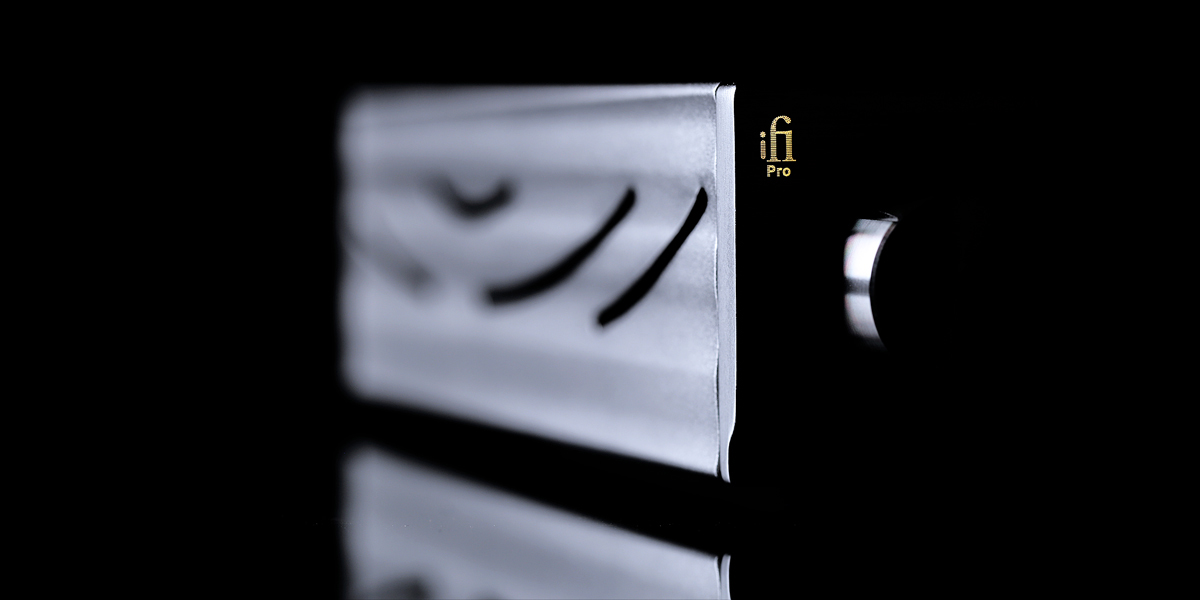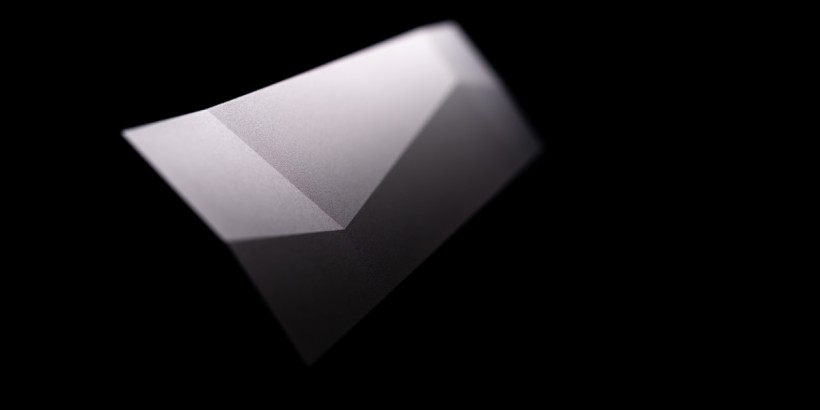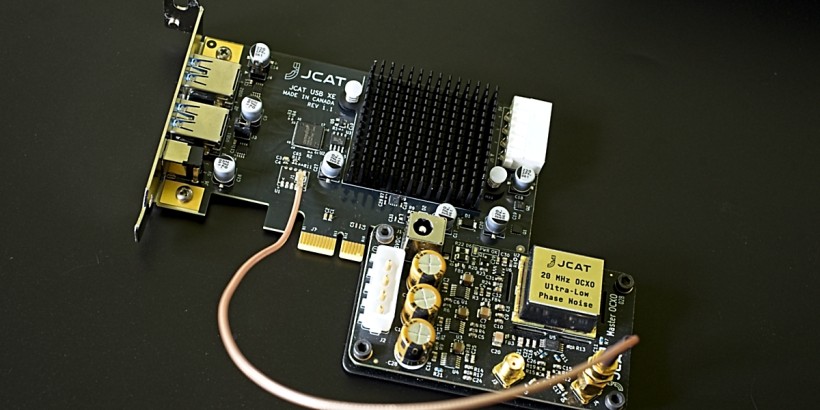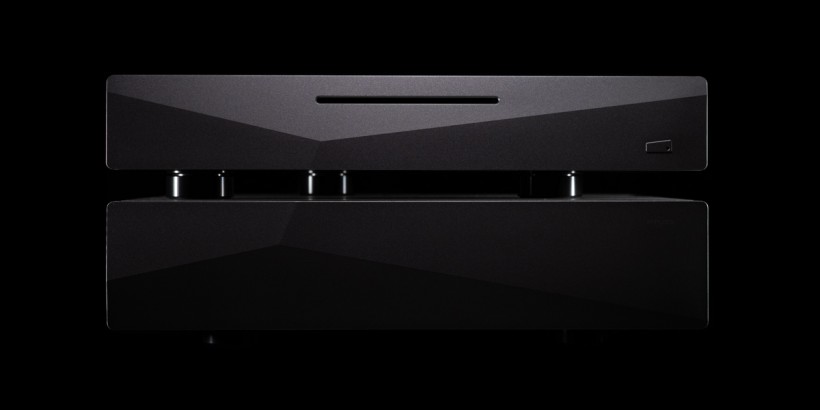IFi Audio has been able to establish a good position on the market, its products are well-known and liked. Enthusiasts love the price to performance ratio. And let’s not forget the brand’s devices which address audio related issues of rather specific sort. But now, after several years, iFi’s management decided to up the ante and head towards the pricier end of the market. The very first deck that fits this description is an amplifier and pre-amplifier combo known as Pro iCAN. Enjoy.
Introduction
In the audio world, a new manufacturer usualy has two options. It can either debut with a bang, with the help of a very expensive product, or it can kick off with an affordable range. We know that iFi Audio chose the latter. They began with desktop solutions that, back then, cost about $400-500. It’s safe to say that iFi Audio kicked off rather innocently. An inconspicuous d/a converter and a headphone amplifier of the same size, known respectively as iDAC and iCAN, were solid proof of how skilled an engineer Thorsten Loesh is. Our English and then unknown brand’s early days were a bit rough, but the road ahead was straight.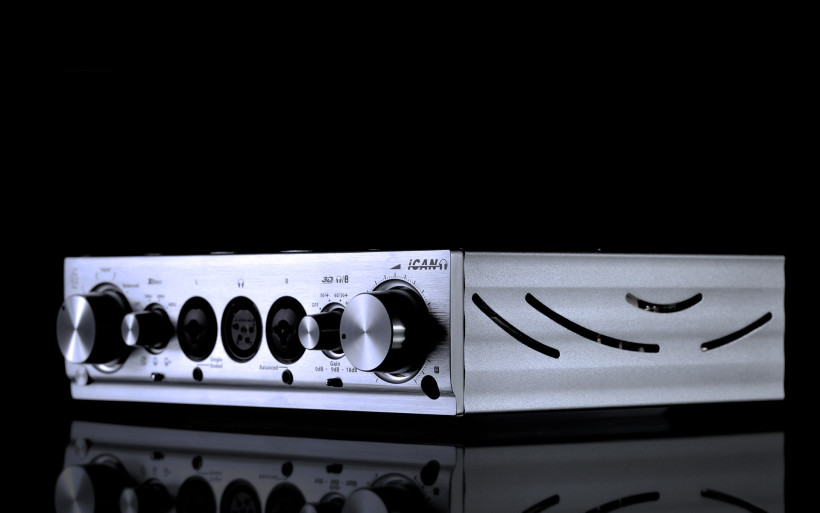 It’s said that Rome wasn’t built in a day and rightfully so. Some things take time. Many audio manufacturers who started with very expensive products are no more. But iFi Audio’s marketing people were patient, raking in the cash wasn’t their goal. In the very beginning, brand recognition is extremely important. It’s known that affordable products allow a manufacturer to reach a broader audience and benefit from the buzz this creates in the market. So now, with hindsight, it’s safe to say that to date, iFi’s marketing decisions have been spot on. But that’s not the whole story. In the very beginning, the company’s offering consisted of certain products which addressed some rather obscure issues and added unique functionality in our setups. Picture back then, iUSB’s and now the iUSB3.0’s regenerative task or iPurifier. Add the iPower DC-power supply, iTube valve buffer/preamplifier and a phonostage known as iPhono and voila, a very interesting offering is here for the taking.
It’s said that Rome wasn’t built in a day and rightfully so. Some things take time. Many audio manufacturers who started with very expensive products are no more. But iFi Audio’s marketing people were patient, raking in the cash wasn’t their goal. In the very beginning, brand recognition is extremely important. It’s known that affordable products allow a manufacturer to reach a broader audience and benefit from the buzz this creates in the market. So now, with hindsight, it’s safe to say that to date, iFi’s marketing decisions have been spot on. But that’s not the whole story. In the very beginning, the company’s offering consisted of certain products which addressed some rather obscure issues and added unique functionality in our setups. Picture back then, iUSB’s and now the iUSB3.0’s regenerative task or iPurifier. Add the iPower DC-power supply, iTube valve buffer/preamplifier and a phonostage known as iPhono and voila, a very interesting offering is here for the taking.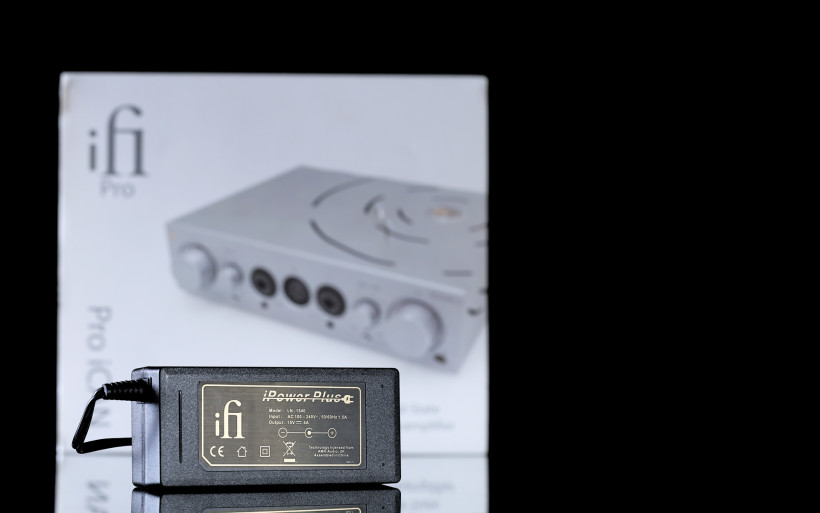 Micro series aside, at some point its smaller and battery based equivalents started to show up. The new Nano family consists of iDSD, iUSB and iCAN. Practically the same items? What for? Ah, the answer to this question is both very simple and painfully obvious. The mobile market called willingly. It’s known that devices able to work with smartphones aren’t part of niche sector anymore, on the contrary, in fact. These tiny solutions are trendsetters and the Nano series is designed to work with a smartphone or a tablet. The gist is to bypass these devices’ d/a and amplification stages, and to use them solely as multitasking transports. The outcome is that the Nano series input improves the sound quality and that’s why these devices were, are and will be liked in the future.
Micro series aside, at some point its smaller and battery based equivalents started to show up. The new Nano family consists of iDSD, iUSB and iCAN. Practically the same items? What for? Ah, the answer to this question is both very simple and painfully obvious. The mobile market called willingly. It’s known that devices able to work with smartphones aren’t part of niche sector anymore, on the contrary, in fact. These tiny solutions are trendsetters and the Nano series is designed to work with a smartphone or a tablet. The gist is to bypass these devices’ d/a and amplification stages, and to use them solely as multitasking transports. The outcome is that the Nano series input improves the sound quality and that’s why these devices were, are and will be liked in the future. Then, the rather expensive Retro model emerged. It consists of an integrated Stereo 50 unit and a pair of passive LS3.5 monitors. In the wake of other very affordable iFi Audio products, the aforementioned bamboo combo is very pricey. But it certainly, takes no prisoners! The Stereo 50 can do literally everything. It’s a d/a converter, wireless receiver, stereo power amp, preamplifier and a phonostage. Undoubtedly that’s a lot of things in one exceptionally damage resilient enclosure. It now looks like the iFi Audio folks recognized that it’s high time for brand new and pricier series and Pro iCAN blazes this trail. This device has a potential to cause quite a stir in the market place, it’s uncompromizing in many ways. Therefore, without further ado, let’s find out what’s what, shall we?
Then, the rather expensive Retro model emerged. It consists of an integrated Stereo 50 unit and a pair of passive LS3.5 monitors. In the wake of other very affordable iFi Audio products, the aforementioned bamboo combo is very pricey. But it certainly, takes no prisoners! The Stereo 50 can do literally everything. It’s a d/a converter, wireless receiver, stereo power amp, preamplifier and a phonostage. Undoubtedly that’s a lot of things in one exceptionally damage resilient enclosure. It now looks like the iFi Audio folks recognized that it’s high time for brand new and pricier series and Pro iCAN blazes this trail. This device has a potential to cause quite a stir in the market place, it’s uncompromizing in many ways. Therefore, without further ado, let’s find out what’s what, shall we?
Build
The Retro model aside, the Pro iCAN is the largest device in iFi Audio’s product range. It measures 213 x 193 x 63 mm (D x W x H) and weighs almost 2 kilograms. A quick glimpse from top to toe, tells me that the golden ratio proportions are preserved. The deck is wide and deep, yet not too tall. The desktop environment ought to be Pro iCAN’s perfect home, since this device isn’t mobile. The quite large power supply is separate and comes as a part of really nice package, white as usual, for some, quite Apple alike. A very simple yet functional remote control is there as well, and so is a pair of nice RCA interconnects.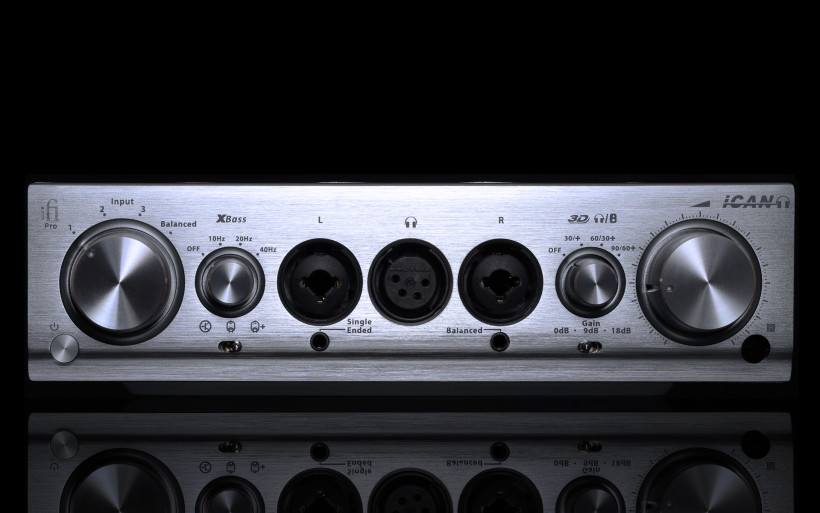 The Pro iCAN is an exceptionally versatile headphone amplifier, which can also perform as a fully analogue preamplifier. This description is unreasonably short, yet as we’ll move on, additional information will be provided. The product’s enclosure is very nice, and made out of magnesium-aluminium alloy. PCB with innards slips out of a sleeve like chassis and a rather thick front panel seals the deal. Normally, this isn’t anything out of ordinary, such solutions are quite common, but the devil is in detail and the Pro iCAN’s is exceptionally meticulously executed. Let me elaborate here a bit. The fantastic looking Retro aside, previous iFi Audio devices were rather normal, nothing out of ordinary. Yes, sliced edges here and there and slightly atypical fronts were always present. But in the Pro iCAN’s case, things look much tastier. It’s easy to see why this deck carries a higher price tag.
The Pro iCAN is an exceptionally versatile headphone amplifier, which can also perform as a fully analogue preamplifier. This description is unreasonably short, yet as we’ll move on, additional information will be provided. The product’s enclosure is very nice, and made out of magnesium-aluminium alloy. PCB with innards slips out of a sleeve like chassis and a rather thick front panel seals the deal. Normally, this isn’t anything out of ordinary, such solutions are quite common, but the devil is in detail and the Pro iCAN’s is exceptionally meticulously executed. Let me elaborate here a bit. The fantastic looking Retro aside, previous iFi Audio devices were rather normal, nothing out of ordinary. Yes, sliced edges here and there and slightly atypical fronts were always present. But in the Pro iCAN’s case, things look much tastier. It’s easy to see why this deck carries a higher price tag.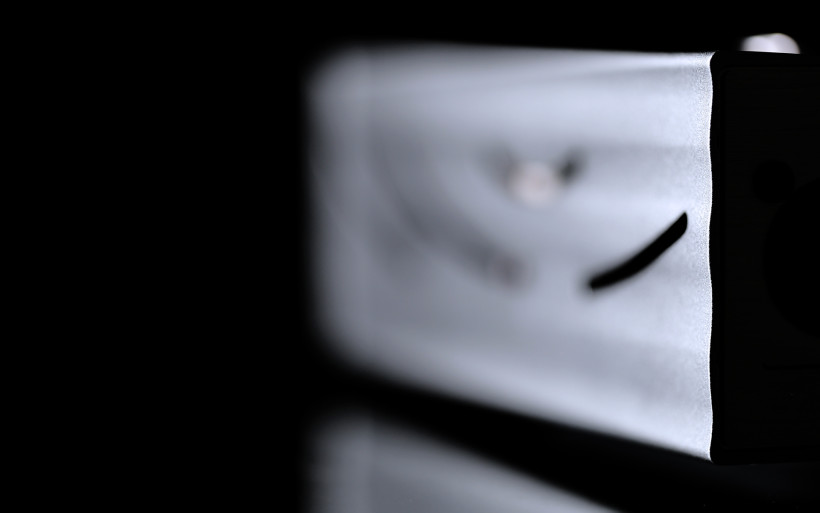 The Pro iCAN’s sides and top are wavy, which looks very nice. Many perforations placed in circle pattern fulfill both ornamental and venting duties. But the best element is a round glass window which works like a magnyfying glass. What is magnified, then? Tubes. Yes, the Pro iCAN has this component on-board. This aspect alone makes the deck an impressively photogenic product to have. The manufacturer wanted to showcase what kind of bulbs are fitted into the Pro iCAN’s innards and to do so, around the aforementioned glass element there’s a round aluminium element with NOS Western Electric 5670 writing visible. This looks very nice. Another distinctive feature of our English box is its bottom. Usually that’s a place where rubber or aluminium feet go. That’s not the case this time. What’s on the Pro iCAN’s belly instead is a rather large syllicone pad, which makes the device look to levitate a bit above the ground. This is a very small detail, yet the overall attention to such small details, makes this an impressive and well-thought design. It’s safe to say that it has its own character.
The Pro iCAN’s sides and top are wavy, which looks very nice. Many perforations placed in circle pattern fulfill both ornamental and venting duties. But the best element is a round glass window which works like a magnyfying glass. What is magnified, then? Tubes. Yes, the Pro iCAN has this component on-board. This aspect alone makes the deck an impressively photogenic product to have. The manufacturer wanted to showcase what kind of bulbs are fitted into the Pro iCAN’s innards and to do so, around the aforementioned glass element there’s a round aluminium element with NOS Western Electric 5670 writing visible. This looks very nice. Another distinctive feature of our English box is its bottom. Usually that’s a place where rubber or aluminium feet go. That’s not the case this time. What’s on the Pro iCAN’s belly instead is a rather large syllicone pad, which makes the device look to levitate a bit above the ground. This is a very small detail, yet the overall attention to such small details, makes this an impressive and well-thought design. It’s safe to say that it has its own character.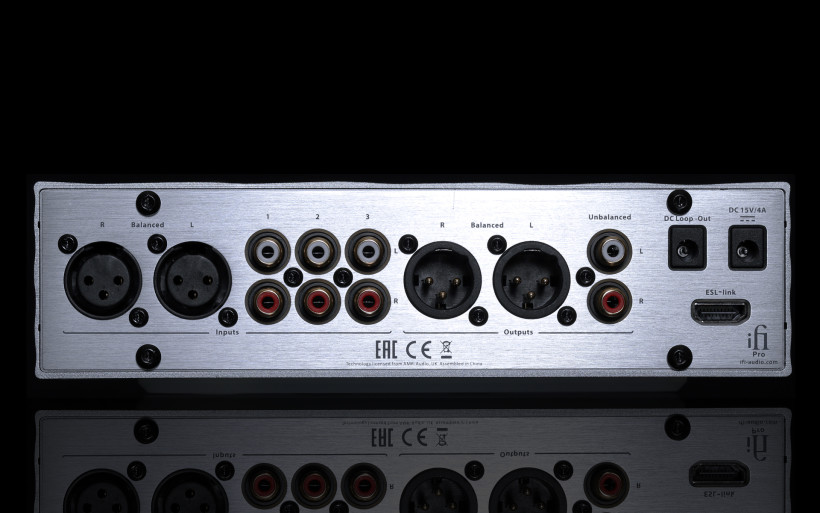 The Pro iCAN’s front is heavily loaded. A very nice manufacturer’s logo shines out from the product’s upper left corner. It changes colour with the various operation modes which is a nice touch. A subtle power switch sits below, the device goes operational after 45 seconds. The big knob on the left is an input selector, and the smaller one nearby is responsible for proprietary XBass function. It’s worth knowing that this filter’s circuitry is purely analogue, no DSP takes place. Further below there’s probably the most important knob on the Pro iCAN. It changes its circuitry between solid state and valve mode. Two amplifiers in one box then? Yes, this is the deck’s main feature, which is very impressive. Correct me if I’m wrong, but as far as I know, no other design as versatile as this exists on our planet? Getting back to this magical knob, there are three options available, two of which we have already covered. The last one, known as Tube+ is an extension to tube mode. In this scenario, negative feedback is reduced to a minimum and this results in higher order harmonics being added to the signal.
The Pro iCAN’s front is heavily loaded. A very nice manufacturer’s logo shines out from the product’s upper left corner. It changes colour with the various operation modes which is a nice touch. A subtle power switch sits below, the device goes operational after 45 seconds. The big knob on the left is an input selector, and the smaller one nearby is responsible for proprietary XBass function. It’s worth knowing that this filter’s circuitry is purely analogue, no DSP takes place. Further below there’s probably the most important knob on the Pro iCAN. It changes its circuitry between solid state and valve mode. Two amplifiers in one box then? Yes, this is the deck’s main feature, which is very impressive. Correct me if I’m wrong, but as far as I know, no other design as versatile as this exists on our planet? Getting back to this magical knob, there are three options available, two of which we have already covered. The last one, known as Tube+ is an extension to tube mode. In this scenario, negative feedback is reduced to a minimum and this results in higher order harmonics being added to the signal.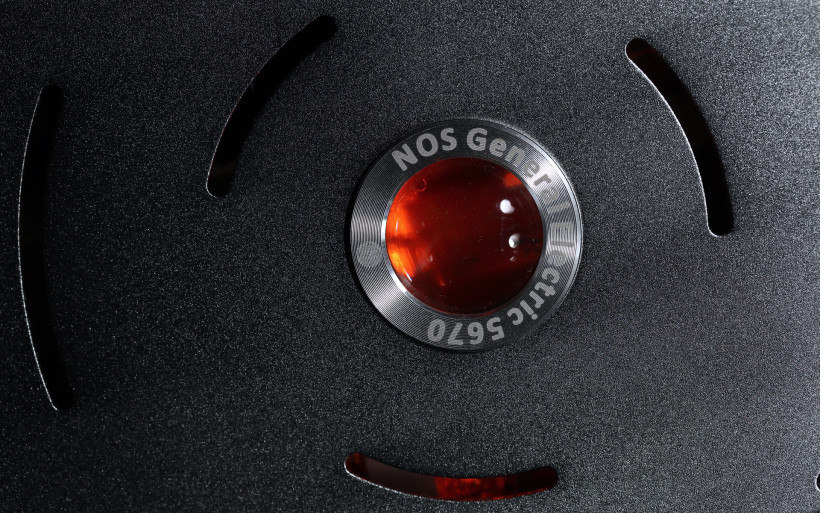 Moving to the right, there are five headphone outs in total. This includes a 4-pin XLR, and a 3-pinXLR/6,5 mm combo sockets sit on both sides. This is done to make things convenient for people who possess cables with 2 x 3-pin XLR terminations. Picture the Audio-Gd Phoenix amplifier and its later iterations. Below the full-sized and balanced socketry there are two 3,5 mm headphone outs; one is regular whereas the other is balanced, the TRRS type. The word is that the Pro iCAN can handle even very sensitive IEMs and we’ll find this out below. Another visible knob is responsible for 3D Holographic Sound analogue filtering. It has several intensity steps and is designed to work with both headphones and stereo loudspeakers. The user can also adjust gain (0 to + 18 dB), and there is a separate knob to do that. The large dial on the front panel’s right side handles volume adjustment. It has a very precise scale around it and works very smoothly. And lastly, a small black piece of glass covers a RC receiver.
Moving to the right, there are five headphone outs in total. This includes a 4-pin XLR, and a 3-pinXLR/6,5 mm combo sockets sit on both sides. This is done to make things convenient for people who possess cables with 2 x 3-pin XLR terminations. Picture the Audio-Gd Phoenix amplifier and its later iterations. Below the full-sized and balanced socketry there are two 3,5 mm headphone outs; one is regular whereas the other is balanced, the TRRS type. The word is that the Pro iCAN can handle even very sensitive IEMs and we’ll find this out below. Another visible knob is responsible for 3D Holographic Sound analogue filtering. It has several intensity steps and is designed to work with both headphones and stereo loudspeakers. The user can also adjust gain (0 to + 18 dB), and there is a separate knob to do that. The large dial on the front panel’s right side handles volume adjustment. It has a very precise scale around it and works very smoothly. And lastly, a small black piece of glass covers a RC receiver. The Pro iCAN’s rear is also packed with kit. There are four inputs in total, all of which are analogue; 1 x XLR and 3 x RCA. The deck’s output stage consists of one pair of XLRs and one RCA. Next in line are three sockets. The one described as DC Loop-Out is unusable for now, but longingly awaits another Pro series product, namely the electrostats ready iEnergiser. The HDMI output visible nearby is a part of this grand plan. Once it’s fully executed, the Pro iCAN will be able to handle every type of headphone on our planet. The last input (DC 15V/4A) takes care of separate power supply.
The Pro iCAN’s rear is also packed with kit. There are four inputs in total, all of which are analogue; 1 x XLR and 3 x RCA. The deck’s output stage consists of one pair of XLRs and one RCA. Next in line are three sockets. The one described as DC Loop-Out is unusable for now, but longingly awaits another Pro series product, namely the electrostats ready iEnergiser. The HDMI output visible nearby is a part of this grand plan. Once it’s fully executed, the Pro iCAN will be able to handle every type of headphone on our planet. The last input (DC 15V/4A) takes care of separate power supply.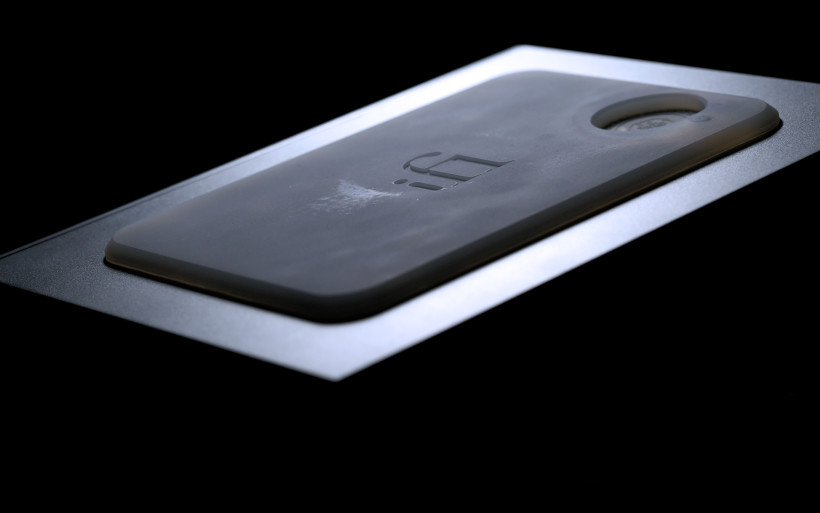 It’s time to write a word or two about the Pro iCAN’s innards. Sadly, still no pictures. There’s a trival reason behind why I wasn’t able to get to the deck’s inside. Its volume knob was fixed very strongly, to a point where this journalist felt that any additional force would damage it. Fortunately, on the manufacturer’s site there are some decent photos so please take a look there. For now, let’s address what’s actually known about the Pro iCAN. This is a fully balanced design, all the way from inputs to outputs and without single-ended conversion anywhere along the road. The topology is also discrete, which means no op-amps anywhere in sight. The PCB is four-layered, NEC relays based. The power supply capacitors are ELNA Silmic II, Panasonic’s ECPU sit in the signal’s path and TDK C0G are seen in remaining places, so are Vishay’s MELF metal foil resistors. Volume control is handled by servomotor equipped 6-track ALPS potentiometer.
It’s time to write a word or two about the Pro iCAN’s innards. Sadly, still no pictures. There’s a trival reason behind why I wasn’t able to get to the deck’s inside. Its volume knob was fixed very strongly, to a point where this journalist felt that any additional force would damage it. Fortunately, on the manufacturer’s site there are some decent photos so please take a look there. For now, let’s address what’s actually known about the Pro iCAN. This is a fully balanced design, all the way from inputs to outputs and without single-ended conversion anywhere along the road. The topology is also discrete, which means no op-amps anywhere in sight. The PCB is four-layered, NEC relays based. The power supply capacitors are ELNA Silmic II, Panasonic’s ECPU sit in the signal’s path and TDK C0G are seen in remaining places, so are Vishay’s MELF metal foil resistors. Volume control is handled by servomotor equipped 6-track ALPS potentiometer.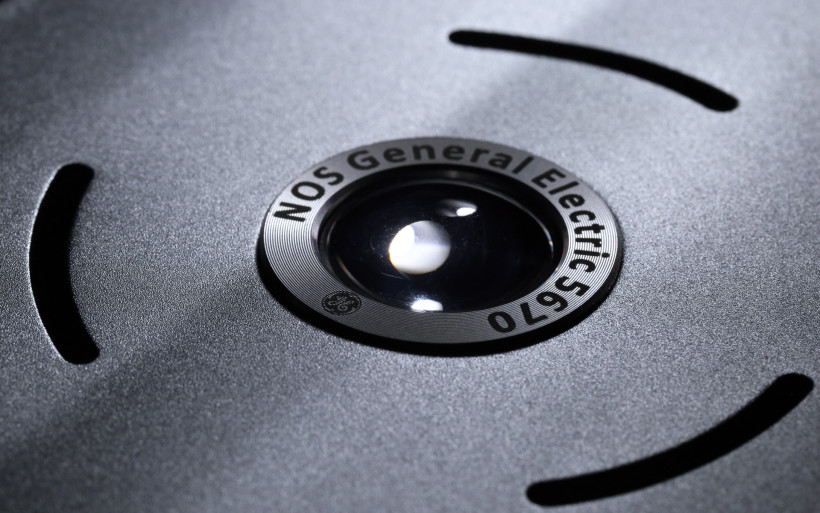 Let me stress again that proprietary effects (3D Holographic Sound i Xbass) are executed in an analogue domain, and the former consists of two circuits; one works with headphones and the other with loudspeakers. The amplification circuit is powerful, 14 Watts info 16 ohms load makes one pay full attention. The Pro iCAN’s pure class A bias makes this device take up to 50 Watts under load and half of that while idle. This beast of an amplifier is marketed as an AKG K-1000 capable product. Now ain’t that something? Let’s add two separate amplification circuits, one tubed and one J-FET + MOSFET based, and the outcome is two devices in one box. When one counts the preamplification stage as well, it’s more like three products in one. Wicked.
Let me stress again that proprietary effects (3D Holographic Sound i Xbass) are executed in an analogue domain, and the former consists of two circuits; one works with headphones and the other with loudspeakers. The amplification circuit is powerful, 14 Watts info 16 ohms load makes one pay full attention. The Pro iCAN’s pure class A bias makes this device take up to 50 Watts under load and half of that while idle. This beast of an amplifier is marketed as an AKG K-1000 capable product. Now ain’t that something? Let’s add two separate amplification circuits, one tubed and one J-FET + MOSFET based, and the outcome is two devices in one box. When one counts the preamplification stage as well, it’s more like three products in one. Wicked.
Sound
In order to know what value the Pro iCAN represents, several things had to be checked out. At first, the device’s preamplification stage was put to the test. LampizatOr’s balanced Golden Gate, Sanders Sound Systems Magtech pre + stereo power amplifier and a laptop as a transport were used in this scenario, along with fine Boenicke W8 floorstanders. The Pro iCAN had to deal with TAIV-C03 ladder, which is a part of the aforementioned Polish source. Moving on, exceptionally sensitive Vision Ears VE5 CIEM-s were used. After these tests were done, it was high time to do some critical listening with full-sized cans; HiFiMAN HE-1000, Fostex TH-900 and ENIGMAcoustic Dharma D1000. Each of these models was used along with LampizatOr’s single-ended Atlantic DAC. Here’s what happened.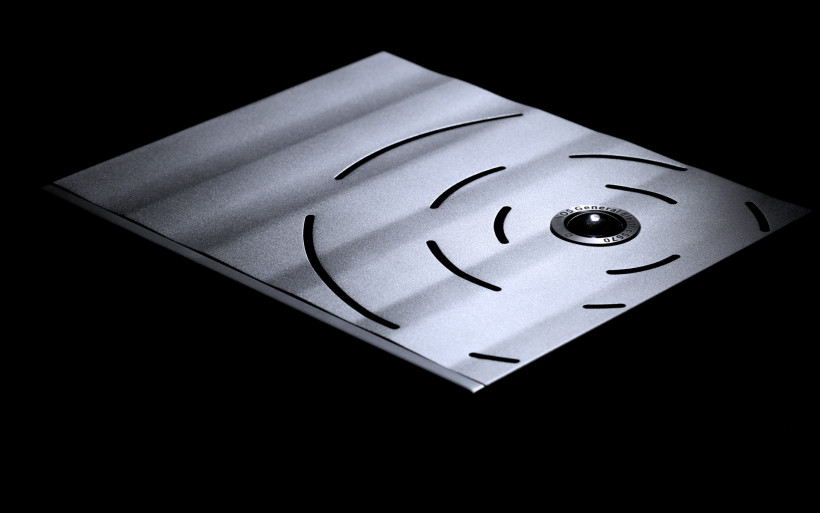 Golden Gate’s volume control is soundwise rather specific. It tends to make the outcome contour and a bit thinner than usual. It’s safe to say that it makes the sound a bit faster. In some setups it works, yet it’s not completely universal because of its inherent features. To paint a proper picture, the MAgtech power amplifier sounds a bit flat and stiff, hence it doesn’t work that well with it. Input impedance mismatch and XLR’s desimetrization doesn’t help as well. Sanders preamplifier is a perfect remedy here, though it’s $5’000 asking price makes a comparison to the Pro iCAN rather unfair. But in order to know what this English deck does with the sound, some background is, nonetheless, needed. To cut a long story short, it performed no worse or better than Golden Gate’s VC, it simply behaved differently. In pure transistor mode, the sound gained some mass, in exchange for slightly slower W8 drive. Apples and oranges, pick yours. Things got different in tube mode. Here the outcome got smoother and additionally denser, but again with even more audible speed trade-off. The effect wasn’t perfectly clean, which it shouldn’t be, as harmonics were a part of the show, elevating the pure joy factor. Just like that. In the end it’s safe to say that the Pro iCAN, as a preamplifier, handled itself nicely in a very expensive setup. The detailing, decay and imaging weren’t truncated and that’s proof of this product’s quality. Let us all remember that this is a $2’000 device and the setup it performed in cost roughly $38’000. You get the picture, the Pro iCAN behaved itself.
Golden Gate’s volume control is soundwise rather specific. It tends to make the outcome contour and a bit thinner than usual. It’s safe to say that it makes the sound a bit faster. In some setups it works, yet it’s not completely universal because of its inherent features. To paint a proper picture, the MAgtech power amplifier sounds a bit flat and stiff, hence it doesn’t work that well with it. Input impedance mismatch and XLR’s desimetrization doesn’t help as well. Sanders preamplifier is a perfect remedy here, though it’s $5’000 asking price makes a comparison to the Pro iCAN rather unfair. But in order to know what this English deck does with the sound, some background is, nonetheless, needed. To cut a long story short, it performed no worse or better than Golden Gate’s VC, it simply behaved differently. In pure transistor mode, the sound gained some mass, in exchange for slightly slower W8 drive. Apples and oranges, pick yours. Things got different in tube mode. Here the outcome got smoother and additionally denser, but again with even more audible speed trade-off. The effect wasn’t perfectly clean, which it shouldn’t be, as harmonics were a part of the show, elevating the pure joy factor. Just like that. In the end it’s safe to say that the Pro iCAN, as a preamplifier, handled itself nicely in a very expensive setup. The detailing, decay and imaging weren’t truncated and that’s proof of this product’s quality. Let us all remember that this is a $2’000 device and the setup it performed in cost roughly $38’000. You get the picture, the Pro iCAN behaved itself.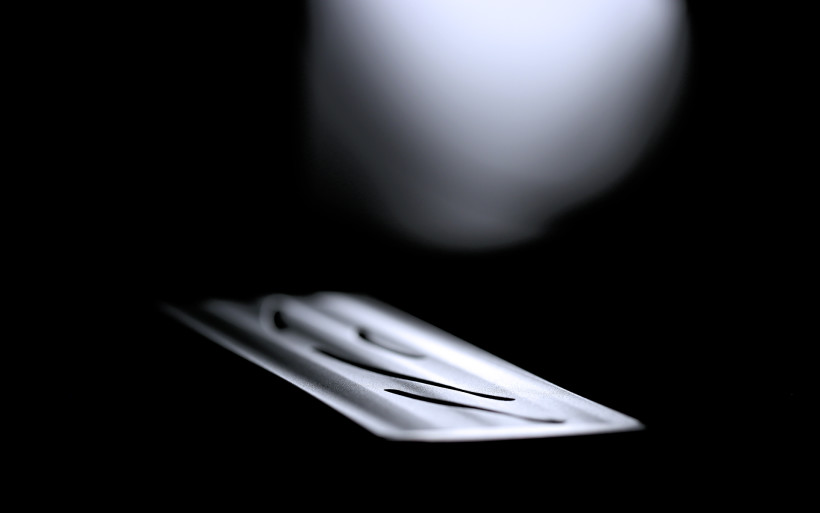 Vision Ears VE5 were next in line. These CIEMs are very clean, transparent, spacious and a bit feathery in performance. In terms of tonal balance, midrange is the dominant part. Clean background and hiss free sound is the very first noticeable thing after connecting VE5 to the Pro iCAN’s 3,5 mm out. There is also a slight channel imbalance during very quiet playback and the song can be heard a bit even after turning a volume knob all the way to the left. Many amplifiers do that. But the Pro iCAN’s hiss free performance and aforementioned quirks are of a very subtle nature. Moving on, this deck’s transistor mode showed what VE5 is all about. The midrange was dense and present, whereas the soundstage got a bit bigger than usual and marvelous smoothness served as a tasty cherry on top. Flipping the Tube mode switch brought different results, things became calmer, more stalwart and muscle mass increased. But all of that happened without resolution loss and with smoothness and clarity intact. Let me put it this way: the VE5 model has been used with dozens of portable and desktop setups, often expensive ones, but this journalist hasn’t heard it to perform this well thus far. The Atlantic and Pro iCAN combo worked amazingly well with said CIEMs and left me utterly impressed. The result of the testing phase is that I wasn’t able to single out one aspect of the product that I’d like to be different. The outcome was that good.
Vision Ears VE5 were next in line. These CIEMs are very clean, transparent, spacious and a bit feathery in performance. In terms of tonal balance, midrange is the dominant part. Clean background and hiss free sound is the very first noticeable thing after connecting VE5 to the Pro iCAN’s 3,5 mm out. There is also a slight channel imbalance during very quiet playback and the song can be heard a bit even after turning a volume knob all the way to the left. Many amplifiers do that. But the Pro iCAN’s hiss free performance and aforementioned quirks are of a very subtle nature. Moving on, this deck’s transistor mode showed what VE5 is all about. The midrange was dense and present, whereas the soundstage got a bit bigger than usual and marvelous smoothness served as a tasty cherry on top. Flipping the Tube mode switch brought different results, things became calmer, more stalwart and muscle mass increased. But all of that happened without resolution loss and with smoothness and clarity intact. Let me put it this way: the VE5 model has been used with dozens of portable and desktop setups, often expensive ones, but this journalist hasn’t heard it to perform this well thus far. The Atlantic and Pro iCAN combo worked amazingly well with said CIEMs and left me utterly impressed. The result of the testing phase is that I wasn’t able to single out one aspect of the product that I’d like to be different. The outcome was that good. It was then high time to find out how the Pro iCAN performs with full-size cans. Yet this time I’ll restrain myself from giving a tonal balance analysis and descriptions of this sort. The reason for this is simple. The said deck performs like a champ here, it doesn’t disappoint in any way and it doesn’t make one part of the FR to be more or less present than the rest. Not even once the notion of “something’s off” was present. Of course, certain headphones do certain things, rather often one has to work in a highly synergistic manner in order to, for example, make downstairs department more tidy and less bloated or to trickle down excessive spark on the top. But the point is that the Pro iCAN doesn’t fiddle here in any way. And even if it does, the alterations are done in a very subtle way.
It was then high time to find out how the Pro iCAN performs with full-size cans. Yet this time I’ll restrain myself from giving a tonal balance analysis and descriptions of this sort. The reason for this is simple. The said deck performs like a champ here, it doesn’t disappoint in any way and it doesn’t make one part of the FR to be more or less present than the rest. Not even once the notion of “something’s off” was present. Of course, certain headphones do certain things, rather often one has to work in a highly synergistic manner in order to, for example, make downstairs department more tidy and less bloated or to trickle down excessive spark on the top. But the point is that the Pro iCAN doesn’t fiddle here in any way. And even if it does, the alterations are done in a very subtle way. The HiFIMAN HE-1000 were next. I haven’t heard them this well-controlled thus far. To be honest, I didn’t think that this product was able to perform with such aplomb and control. During heavy and very heavy music listenings, the notion of me seated in front of a 800HP muscle car’s steering wheel was constantly present. It’s not loudness, but sheer force that makes the HE-1000’s planarmagnetic drivers to go wild again and again and again. Dynamic contrasts serve that purpose and in the Pro iCAN and the HE-1000’s case it’s an impressive thing to hear. AC/DC’s „Dirty Deeds Done Dirt Cheap”, „Thunderstruck” or „Who Made Who” were served in really grand, therefore fast, dense and lively fashion. The same story went with „Daraijin” by KODO drummers, but this time the key instruments performed with a sense of scale very rarely heard. It has to be said though, that the outcome was always refined and mature, instead of juvenile jumpiness which would mask said headphones’ inherent virtues.
The HiFIMAN HE-1000 were next. I haven’t heard them this well-controlled thus far. To be honest, I didn’t think that this product was able to perform with such aplomb and control. During heavy and very heavy music listenings, the notion of me seated in front of a 800HP muscle car’s steering wheel was constantly present. It’s not loudness, but sheer force that makes the HE-1000’s planarmagnetic drivers to go wild again and again and again. Dynamic contrasts serve that purpose and in the Pro iCAN and the HE-1000’s case it’s an impressive thing to hear. AC/DC’s „Dirty Deeds Done Dirt Cheap”, „Thunderstruck” or „Who Made Who” were served in really grand, therefore fast, dense and lively fashion. The same story went with „Daraijin” by KODO drummers, but this time the key instruments performed with a sense of scale very rarely heard. It has to be said though, that the outcome was always refined and mature, instead of juvenile jumpiness which would mask said headphones’ inherent virtues. It quickly became apparent that the Pro iCAN is very energetic, regardless of headphones. The same impressive effect was achieved with hybrid D1000 Dharmas and dynamic TH-900. Yes, dynamics wise, great outcomes all across the board was achieved, but this story is far from finished. It is said that speed is the domain of transistors based circuitry. Yet, it is evident that the Pro iCAN’s punchy behavior is always audible in every mode. Therefore yes, after switching to Tube or its + version, one witnesses more or less the same jumpy show, which is both fascinating and positively surprising. If you’re worried that merely one available operation mode out of three will be good enough in terms of dynamics, rest assured that that’s not the case this time.
It quickly became apparent that the Pro iCAN is very energetic, regardless of headphones. The same impressive effect was achieved with hybrid D1000 Dharmas and dynamic TH-900. Yes, dynamics wise, great outcomes all across the board was achieved, but this story is far from finished. It is said that speed is the domain of transistors based circuitry. Yet, it is evident that the Pro iCAN’s punchy behavior is always audible in every mode. Therefore yes, after switching to Tube or its + version, one witnesses more or less the same jumpy show, which is both fascinating and positively surprising. If you’re worried that merely one available operation mode out of three will be good enough in terms of dynamics, rest assured that that’s not the case this time.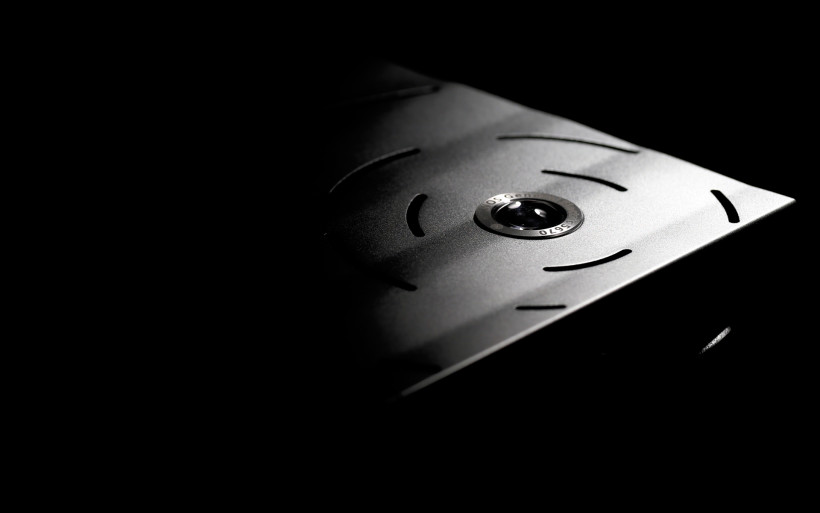 The Pro iCAN does the job well not only in terms of dynamic contrasts in music, but the saturation and imaging is also top notch. Though one thing has to be pointed out. The device is so unique, that it’s really difficult to define, i.e. as a plainly dense or skinny deck. It simply doesn’t play in the extreme team. For instance, less body in transistor mode in comparison to tube circuitry doesn’t mean that our English performer is skinny. Class A body mass is present, yet in a very pleasing, punchy fashion and that really is something. In this regard, the Pro iCAN acts like the Trilogy 933, yet I’m not able to describe to what degree, as the former isn’t nearby. But what’s worth knowing is that the former machine doesn’t sound stiff or dry, which is the case with many transistor based amplifiers. It will inject some muscularity to feathery cans, in about the same way it interacted with VE5 CIEMs. Yet, it won’t suddenly turn the HD 800 into an LCD-2 type of performer. This would be odd to say the least. Tube based circuitry is something different and this can be heard instantly. The outcome is heavier and warmer, yes but yet, they aren’t as different as night and day. These three options have some things in common, we’ll get to that part. For now, the most important thing is that the Pro iCAN as a pure transistor machine will perform in the most contour, punchy and precise way. Tube component will net about as dynamic and detailed, yet rounder and less raw outcome, that’s the takeaway.
The Pro iCAN does the job well not only in terms of dynamic contrasts in music, but the saturation and imaging is also top notch. Though one thing has to be pointed out. The device is so unique, that it’s really difficult to define, i.e. as a plainly dense or skinny deck. It simply doesn’t play in the extreme team. For instance, less body in transistor mode in comparison to tube circuitry doesn’t mean that our English performer is skinny. Class A body mass is present, yet in a very pleasing, punchy fashion and that really is something. In this regard, the Pro iCAN acts like the Trilogy 933, yet I’m not able to describe to what degree, as the former isn’t nearby. But what’s worth knowing is that the former machine doesn’t sound stiff or dry, which is the case with many transistor based amplifiers. It will inject some muscularity to feathery cans, in about the same way it interacted with VE5 CIEMs. Yet, it won’t suddenly turn the HD 800 into an LCD-2 type of performer. This would be odd to say the least. Tube based circuitry is something different and this can be heard instantly. The outcome is heavier and warmer, yes but yet, they aren’t as different as night and day. These three options have some things in common, we’ll get to that part. For now, the most important thing is that the Pro iCAN as a pure transistor machine will perform in the most contour, punchy and precise way. Tube component will net about as dynamic and detailed, yet rounder and less raw outcome, that’s the takeaway.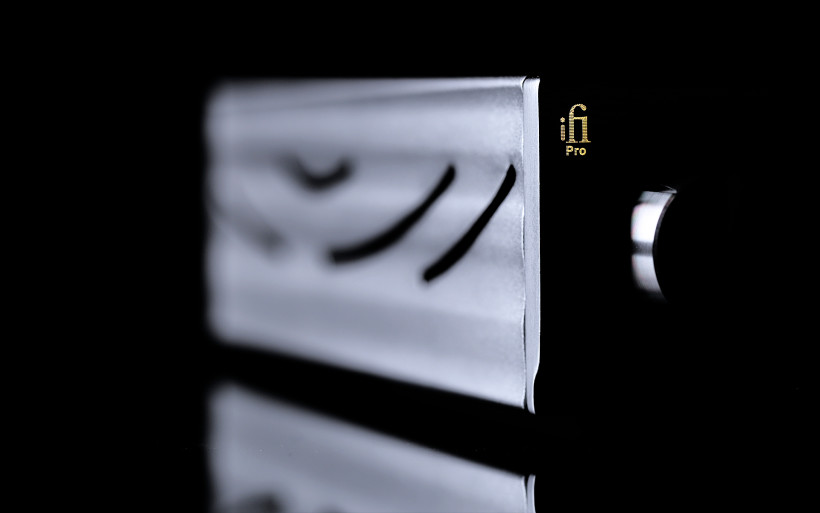 With the Pro iCAN, one doesn’t have to cherry pick between speed, imaging and resolution. These aspects are always there, regardless of deck’s operation modes. The differences between circuitry switches involve roundness and density instead of the aforementioned factors and that’s remarkable. The Pro iCAN always delivers boldly and with authority, yet it’s not merely about the soundstage’s width, height or depth. Yours truly has had the pleasure of listening to even more expansively sounding products in this regard. But with the Pro iCAN, it’s about the scale in music and the ability to show all the instruments in the right proportions, making them literally materialize in front of a listener! Yes, this English deck is easily able to paint a very subtle picture and become a real moodmaker, but with the right headphones, it’s also capable of showing grand orchestral schemes like a true champ. It always does it with pinpoint accuracy and involvingly.
With the Pro iCAN, one doesn’t have to cherry pick between speed, imaging and resolution. These aspects are always there, regardless of deck’s operation modes. The differences between circuitry switches involve roundness and density instead of the aforementioned factors and that’s remarkable. The Pro iCAN always delivers boldly and with authority, yet it’s not merely about the soundstage’s width, height or depth. Yours truly has had the pleasure of listening to even more expansively sounding products in this regard. But with the Pro iCAN, it’s about the scale in music and the ability to show all the instruments in the right proportions, making them literally materialize in front of a listener! Yes, this English deck is easily able to paint a very subtle picture and become a real moodmaker, but with the right headphones, it’s also capable of showing grand orchestral schemes like a true champ. It always does it with pinpoint accuracy and involvingly. To be as precise, yes, there are some mild differences between the Pro iCAN’s modes in terms of highs. Purely transistor circuitry makes this part of the audible FR the most vibrant, whereas the tubes deliver more smoothness there. Tube+ adds a bit more grain to the outcome. But the point is that, with the headphones I had on hand during the testing phase, the highs were always at least good, but usually impressive. I could add additional FR examples, but I’m sure you get the picture.
To be as precise, yes, there are some mild differences between the Pro iCAN’s modes in terms of highs. Purely transistor circuitry makes this part of the audible FR the most vibrant, whereas the tubes deliver more smoothness there. Tube+ adds a bit more grain to the outcome. But the point is that, with the headphones I had on hand during the testing phase, the highs were always at least good, but usually impressive. I could add additional FR examples, but I’m sure you get the picture.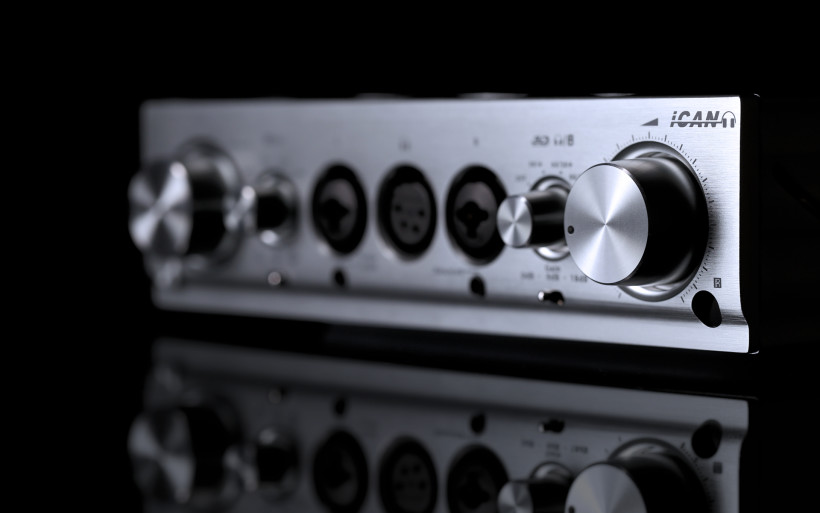 If I had to describe the Pro iCAN’s performance in blunt words, speed, resolution, smoothness and generous density would be properly descriptive measures to do so. But this deck is also slightly contour, subtle and almost ethereal when needed. And when it plays, it’s always in a lively and tangible manner. The Pro iCAN isn’t a magnifying glass for music, it plays in a league which is too organic to describe as narrowly as this. The most important thing is that this English champ bears not one but several marks, reserved for products said as unique and listener gets this kind of an impression rather fast. The Pro iCAN isn’t tiresome at all, one can spend long hours with headphones on head and this time will be spent really well. This deck also performs in a very easygoing way regardless of its operation mode. It’s true that there are at least a few products of this very sort, also able to deliver an exceptionally easygoing experience, totally without boundaries but only a handful of these devices do this without thinness or slowness. Also, the Pro iCAN squeezes every bit of emotion out of the music, it’s a terrific moodmaker and the sound it provides is as far away from dullness as it gets.
If I had to describe the Pro iCAN’s performance in blunt words, speed, resolution, smoothness and generous density would be properly descriptive measures to do so. But this deck is also slightly contour, subtle and almost ethereal when needed. And when it plays, it’s always in a lively and tangible manner. The Pro iCAN isn’t a magnifying glass for music, it plays in a league which is too organic to describe as narrowly as this. The most important thing is that this English champ bears not one but several marks, reserved for products said as unique and listener gets this kind of an impression rather fast. The Pro iCAN isn’t tiresome at all, one can spend long hours with headphones on head and this time will be spent really well. This deck also performs in a very easygoing way regardless of its operation mode. It’s true that there are at least a few products of this very sort, also able to deliver an exceptionally easygoing experience, totally without boundaries but only a handful of these devices do this without thinness or slowness. Also, the Pro iCAN squeezes every bit of emotion out of the music, it’s a terrific moodmaker and the sound it provides is as far away from dullness as it gets. The Pro iCAN also shows off rather marvelously the other equipment it is paired with. It simply doesn’t tone down another components’ character or impose its own more than the operation mode requires. Terrific drive aside, not a single pair of headphones used in this test performed in a completely new way. No synergistic scenario of HD 800 + Bakoon HPA-21 sort took place but having said that, the Pro iCAN got along perfectly fine with three completely different performers. Not only did it do that, but it also displayed some features normally only reserved for the very best amplifiers known to yours truly. It amplified the signal, but also brought an additional lively element to the music, this so-called organic approach, which is very rarely heard. If it is heard, it is usually with significantly more expensive decks, like the English 933 or Korean HPA-21 and such like.
The Pro iCAN also shows off rather marvelously the other equipment it is paired with. It simply doesn’t tone down another components’ character or impose its own more than the operation mode requires. Terrific drive aside, not a single pair of headphones used in this test performed in a completely new way. No synergistic scenario of HD 800 + Bakoon HPA-21 sort took place but having said that, the Pro iCAN got along perfectly fine with three completely different performers. Not only did it do that, but it also displayed some features normally only reserved for the very best amplifiers known to yours truly. It amplified the signal, but also brought an additional lively element to the music, this so-called organic approach, which is very rarely heard. If it is heard, it is usually with significantly more expensive decks, like the English 933 or Korean HPA-21 and such like.
Summary
The Pro iCAN is a marvelous product. It shouldn’t be seen as merely a headphone amplifier, it goes much beyond this. Three devices – two headphone amplifiers and a preamplifier – enclosed in one fancy chassis is a more reasonable description. In terms of functionality and build quality, there’s no valid reason to be picky. Numerous inputs and outputs, headphone capabilities and proprietary sound correction, which actually work as intended are something to behold. Heck, even vacuum tubes are on-board. The enclosure is well thought through and not over-engineered. The exposed glass accent hits the bulls-eye. What more one could want?
As far as the sound quality goes, the Pro iCAN not only defends itself, but, in many regards, is an impressive performer. After an hour of initial impressions it was rather clear that there is no point in comparing this English deck to the Xonar Essence III. Firstly, the latter isn’t that well-known and secondly, please see this as an act of mercy at my end. Or call me unreliable or unprofessional. But the real point is that the Pro iCAN does things with the sound it’s Asus competitor isn’t capable of. Completely different smoothness, decay, imaging, overall balance or sheer dive are on the table here. iFi Audio’s latest performer has turned out to be an exceptionally versatile chameleon. If a particular set of cans doesn’t fit with the pure transistor mode, it has to go rather well with at least one out of two tube options available.
Let me stress again, that the Pro iCAN can’t be put in one certain and stiff category in terms of its sound. This is a very refined product, which never underperforms and is marvelous in many regards. It’ll get along just fine with virtually every set of cans or IEMs out there. In the end, because of its many advantages, it IS worth the asking price. Which amplifier on the market offers as much as this deck? Rest assured that products of this very fine sort are as rare as white crows. And it’s widely known that if one appears, it’s high time to give it your full attention. ‘Till next time.
Associated equipment:
- Headphones: HiFiMAN HE-1000, ENIGMAcoustic Dharma D1000, Fostex TH-900, Vision Ears VE5
- Headphone cables: Forza AudioWorks Noir Hybrid
- Amplifiers: Sanders Sound Systems Magtech + przedwzmacniacz firmowy
- Digital source: Lampizator Golden Gate (Psvane WE101D-L + KR Audio 5U4G Ltd. Ed.), LampizatOr Atlantic
- Speakers: Boenicke Audio W8
- Speaker cable: Albedo Monolith
- Interconnects: Albedo Monolith
- Power delivery: Gigawatt PF-2 + Gigawatt LC-2 MK2 + Forza AudioWorks Noir Concept
- Equipment rack: Lavardin K-Rak
- Music: NativeDSD
- Playback platform: Roon
Retail price of reviewed component in EU:
- iFi Audio Pro iCAN: €1’999
Manufacturer: iFi Audio


